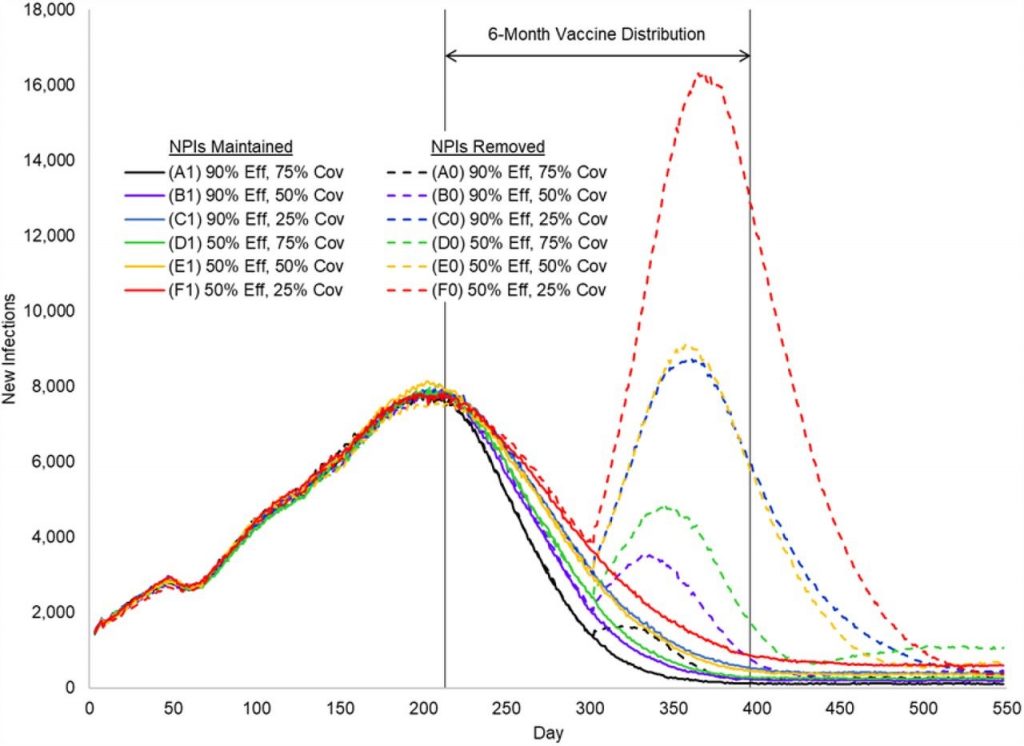COVID-19 simulation shows importance of continued safety efforts during vaccine distribution
June 2, 2021
New research published by JAMA Network Open shows how non-pharmaceutical interventions (NPIs) like mask wearing and physical distancing can help prevent spikes in COVID-19 cases as populations continue to get vaccinated.
This study focuses on the state of North Carolina. Similar modeling studies have been used in different states and serve as guidance to leaders as they make decisions around relaxing restrictions and safety protocols.

Dr. Kristen Hassmiller Lich

Dr. Mehul Patel
The research was led by Mehul Patel, PhD — an alumnus of the UNC Gillings School of Global Public Health and a clinical and population health researcher in the department of Emergency Medicine at UNC’s School of Medicine. Co-authors from the Gillings School are Associate Professor Kristen Hassmiller Lich, PhD, and doctoral student Karl Johnson, both with the Department of Health Policy and Management.
“The computer simulation modeling allows us to look at multiple factors that play a role in decreasing the spread of COVID-19 as vaccines are distributed,” Patel said. “We looked at vaccine effectiveness, percent of population vaccinated, and adherence to precautions like mask wearing and physical distancing over a set period of time.”

This is a graphic from the COVID-19 simulation.
The image above is a model of multiple scenarios within the state of North Carolina. Knowing that the Pfizer and Moderna vaccines are more than 90% effective at preventing severe COVID-19, researchers can follow the black, purple and blue lines to see what could happen if NPIs like mask wearing and physical distancing are not followed while communities are vaccinated. The simulation also demonstrates how important it is for as many people as possible to get fully vaccinated.
For example, looking at scenario A1 (the solid black line), if 75% of the state’s population gets fully vaccinated and residents continue to adhere to NPIs, there is likely to be a sustained decline down to very few new COVID cases over a six month period. In contrast, looking at scenario C0 (the dashed blue line), if only 25% of the population gets fully vaccinated and other do not adhere to NPIs, the state could see a sustained increase in daily COVID cases, peaking around 8,000, before experiencing another decline. For reference, as of June 1, 38.9% of the entire North Carolina population had been fully vaccinated.
“As soon as you start relaxing mask wearing and physical distancing with any percent of the population vaccinated, you see an increase in cases,” Patel said. “Until we reach around 50% of the population vaccinated, there is more potential to have disease spread if we remove NPIs.”
Contact the UNC Gillings School of Global Public Health communications team at sphcomm@unc.edu.
